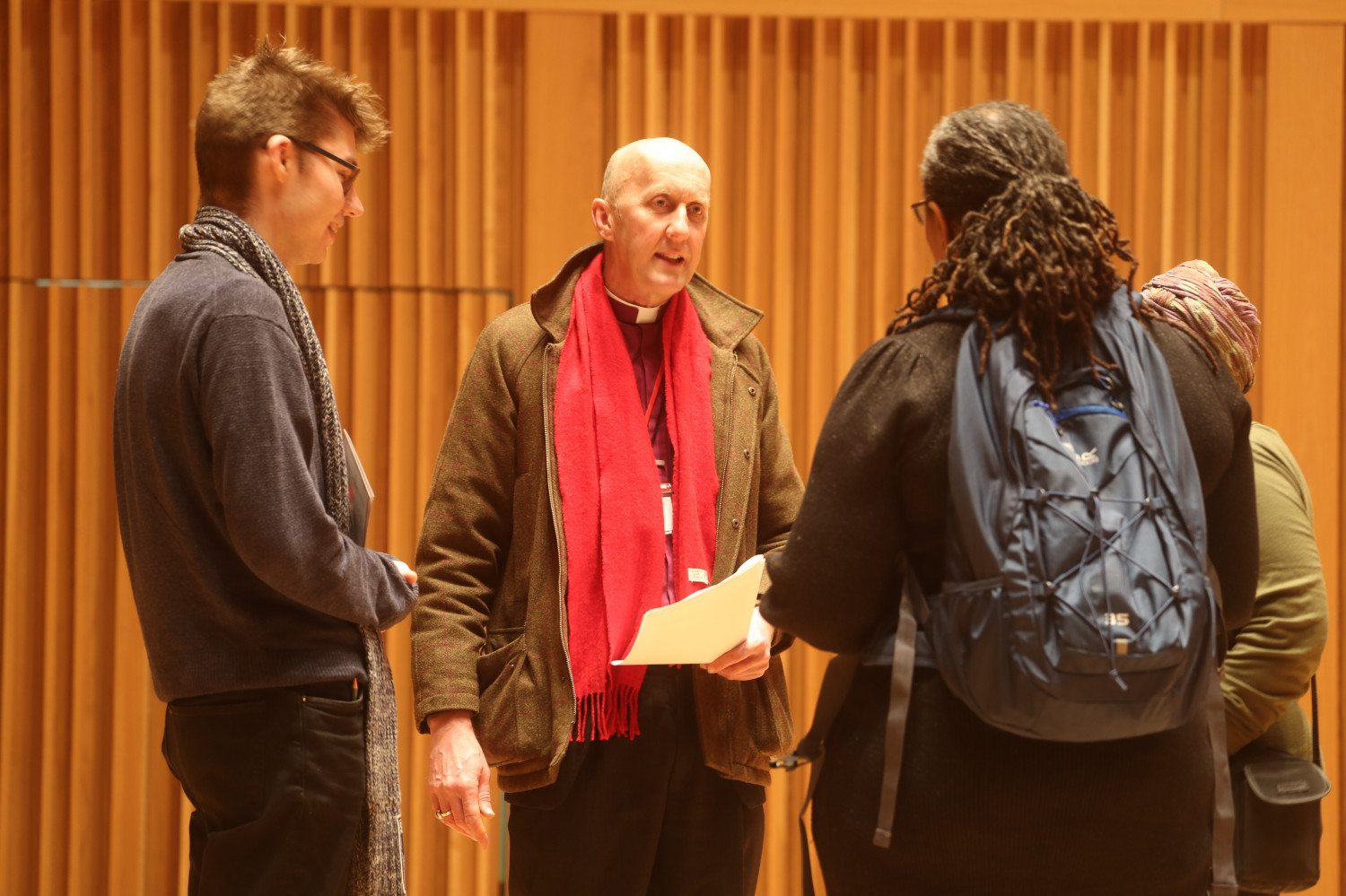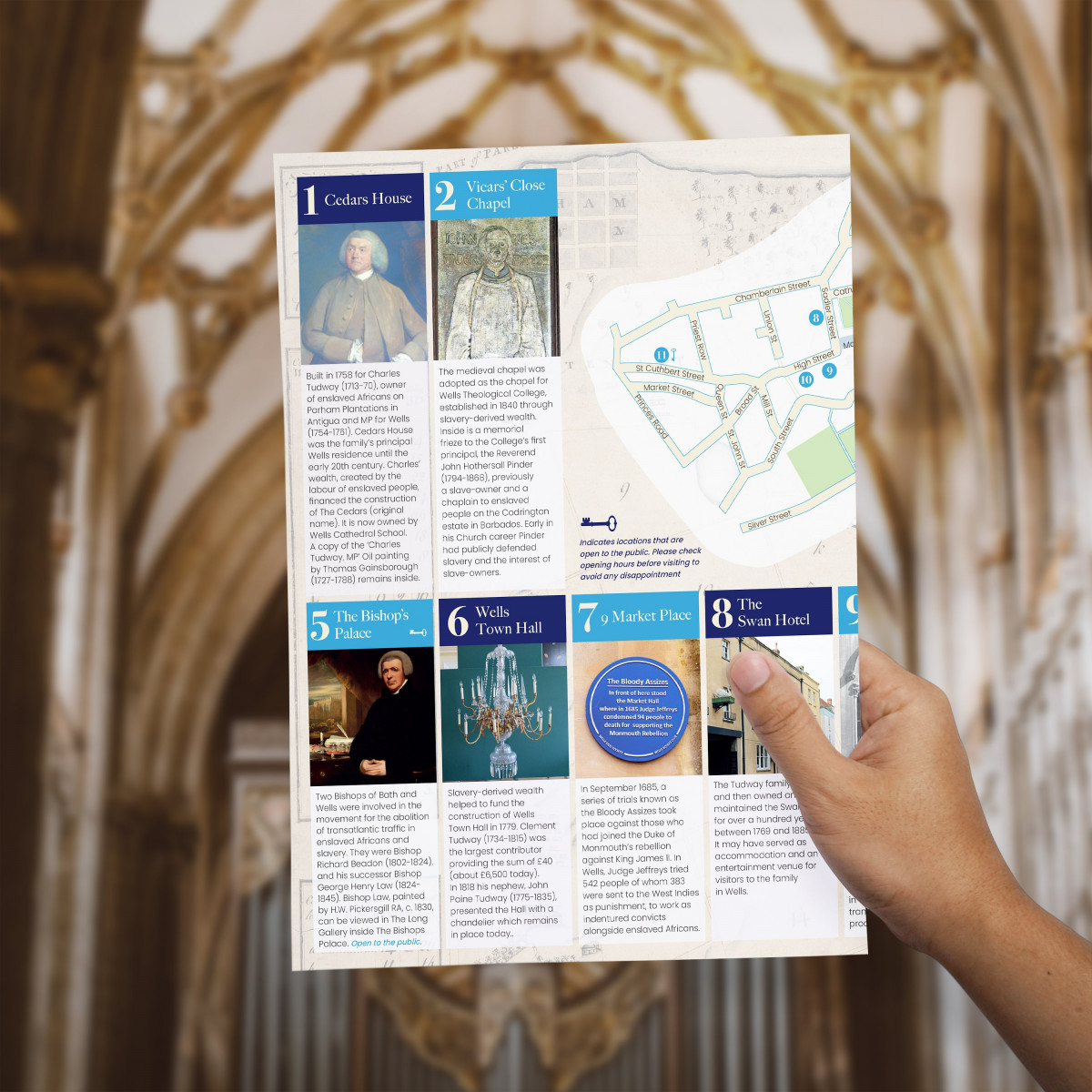Revd
More than a hundred people attended a conference in Wells which focused on the city’s historic links with transatlantic slavery. Speakers from Britain and the Caribbean came together at Cedars Hall in Wells, for the thought-provoking and inspiring day.
In common with other churches and other institutions, the Chapter of Wells Cathedral arranged for an investigation of the Cathedral’s historic links to the slave trade and British slavery in the Caribbean.The conference shared the findings of the research (which is ongoing), which shows that, "The Cathedral’s proximity to Bristol, one of Britain’s major transatlantic slave-trading ports and a hub for commercial activity, meant that it sat physically surrounded by propertied families who had generated their wealth from transatlantic slavery. Families such as the Tudways in Wells, the Dickinsons in Kingweston, and the PretorPinneys in Somerton all lived in close proximity to the Cathedral and commanded significant wealth and influence in local politics and public affairs."
It also shows that the wealth accrued was often invested in the local community. "With the passage of the Reform Act in1832 and the Slavery Abolition Act in 1833, wealthy Somerset-based families with connections to Caribbean slavery looked to invest their financial capital, both from their profits from enslaved labour and the compensation for slavery paid out under abolition, in the political and religious institutions of the day."
More about the research and its findings can be found on the Wells Cathedral website.
The conference, hosted by Wells Cathedral School, attracted 135 adults and sixth formers; a hundred others including organisations and individuals from across the Atlantic, registered to be sent the recorded speeches after the event. Recordings of the talks will be available online from the end of March 2023 via the project’s dedicated website.
The conference heard from a wide range of speakers who give a range of histories and perspectives on the issue. They included Reverend Dr Carlton Turner, a Theologian from The Queen’s Foundation, Birmingham, who shared his very personal story and spoke about "Re-thinking African enslavement". He explained how the trauma associated with enslavement, and the race-based ideas that justified it, still affect people on both sides of the Atlantic. He said, “the Anglican Church is implicated in this trauma, and together with others, can help with the healing process.”
Ven. Anne Gell, Acting Dean of Wells Cathedral, thanked those involved in the Wells and Transatlantic Slavery Project for all the work undertaken to open up the subject and help everyone understand the reality of the transatlantic slave trade, and how its legacy is woven into the fabric of life in Wells.
She referred to the statement from the Chapter of Wells Cathedral which states: "The research clearly indicates that Wells Cathedral has benefited from slavery-derived wealth from both the slave trade and the enslavement of people in the Caribbean. Chapter is profoundly sorry for the effects of these historic failings and aims to scrutinise and respond to any financial, social, spiritual and other legacies from this time in order that it may do better in the present. Chapter will also look to work with individuals and organisations in the Caribbean, so that these histories may be meaningfully addressed from both sides of the Atlantic."
Author Stephanie Mathivet explored how Wells has been impacted by the Tudway family, owners of enslaved Africans on the Parham plantations in Antigua from 1679–1944. Joy Lawrence OH, an Antiguan historian and poet, shared a 20-minute film—featuring one of the project’s partners, the Museum of Antigua and Barbuda—showing the Parham plantations today and explained how the legacy of slavery in Antigua continues.



The conference also marked the launch of the "self-guided trail to historic sites linking the City of Wells to British slavery". The trail includes sites such as Wells Cathedral, The Bishop’s Palace, and Wells and Mendip Museum. It highlights treasured places and items; such as paintings, stained-glass windows, and chandeliers, that all have connections to the enslavement of Africans. A QR code from the trail takes you to the website for further information.
James Clark, Professor of History at Exeter University who gave a presentation about the Cathedral’s links to slavery, said, “Many historic landmarks in Wells were built or rebuilt with slavery-derived wealth from the plantations in the West Indies, but until now, these have been hidden histories and what this project has done is draw back the curtain on what some might see as challenging territory, telling this story for the first time.”

Students from the Blue School went to the Cathedral and Bishop’s Palace to learn how to use primary source materials to uncover hidden histories that link Wells both to slavery and the abolition movement. There was also a ‘Seeing your city in a new light?’ discussion led by the project’s mentor, Rob Mitchell, about what the city can do to remember and move forward with this history. The day closed with a plenary, a libation and a prayer led by Reverend Dr Carlton Turner.